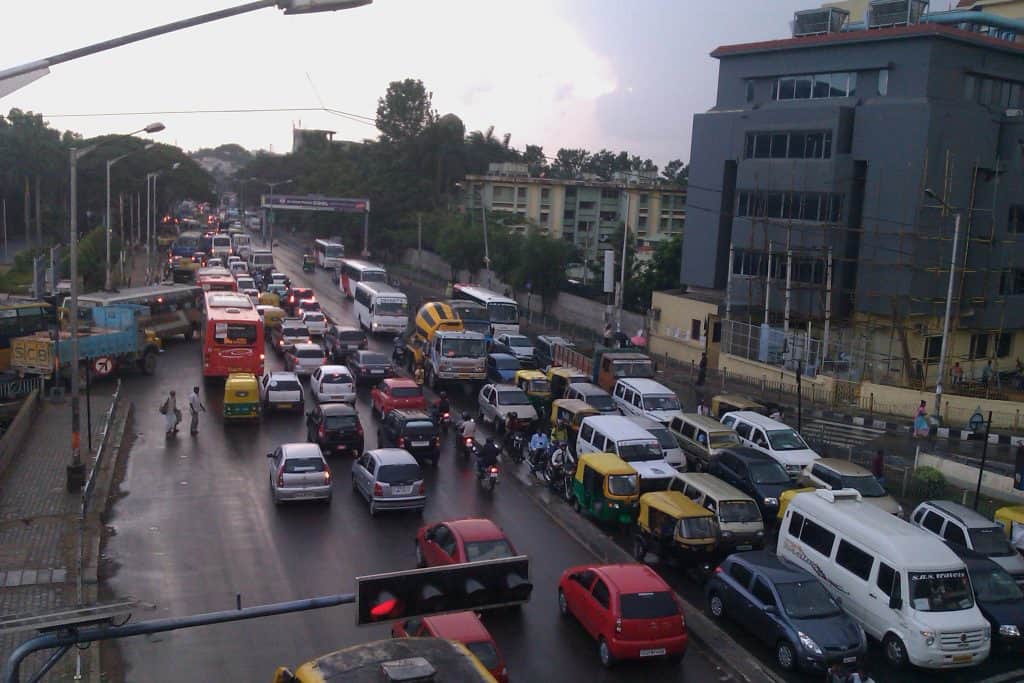City soars with ISRO
A new video of Indian Space Research Organisation’s (ISRO) Chandrayaan-3 Rover ramping down from the Lander to the Lunar surface, as well as a photo of the moon’s surface, were released on August 24th.
Hundreds of Bengalurians celebrated ISRO’s Chandrayaan-3 completion of soft landing on the moon’s south pole. There were jubilant screenings and scientific commentaries at the Jawaharlal Nehru Planetarium, Indian Institute of Astrophysics campus, Century Club at Ambedkar Veedhi and Visvesvaraya Industrial and Technological Museum (VITM). A special screening at the Dr A P J Abdul Kalam Park in ISRO Layout had many former ISRO scientists and retired employees interacting with the public.
The ISRO’s Telemetry, Tracking and Command (ISTRAC) Centre provided command tracking support, while the state-of-the-art mission control facility or MOX had scientists monitoring the mission every minute. ISTRAC will receive data from the spacecraft and communicate commands.
Source: Indian Express, Deccan Herald, The Hindu
Concerns over BBMP’s new wards
Residents are bewildered over the newly-carved wards of the Bruhat Bengaluru Mahanagara Palike (BBMP), which were notified on August 18th. A number of wards are irregularly shaped or are disproportionate to the population. Some boundaries are even cutting through residential layouts, slums or primary roads. At least three wards show isolated areas that have fragmented boundaries. Other wards show irrelevant and sharp turns. Accessing the ward office or meeting BBMP engineers and councillors even pose challenges.
For instance, Rajendra Nagar slum area in the BTM Assembly constituency have a few portions under three distinct wards, which may divide the residents. BDA’s residential areas too have been split.
Source: Deccan Herald
Read more: Ward delimitation yet again: Here’s what you need to know
BBMP’s pending bills
BBMP has pending bills mounting to Rs 6,077.7 crore, which is probably the highest ever for the civic body. Bills have been pending since April 2021. Most contractors have stopped work over non-payment of pending bills, which has brought almost all work in the city to almost a standstill.
BBMP Chief Commissioner Tushar Girinath said that they have cleared bills worth Rs 25 lakh, which have amounted to a total clearance of Rs 42 crore. Other payments related to other works will be made only after the Special Investigation Team’s (SIT) finishes its inquiry. However, the BBMP Working Contractors’ Association complained that the BBMP owes crores to the contractors.
Source: Deccan Herald
MNCs for public interest projects
At least 60 multinationals took forward an initiative to promote sustainability in public interest projects, titled Sustainability Ecosystem Collaboration (SEC). Every month, they gather to debate on contributing to public projects and share best company practices and startup solutions they can replicate, from mapping EV charging stations over cloud to making solar rooftops affordable, reducing packaging waste, and developing mechanisms to track carbon consumption in the supply chain.
SEC has already joined the steering committee of the PersonalToPublic (P2P) campaign to boost commuting by Namma Metro. The Metro Mitra app by an auto union supports such efforts.
Source: Deccan Herald
New model to monitor air quality
A pilot project by the National Institute of Advanced Studies (NIAS) will aim to build a predictive model using historical data to forecast and validate air quality. Soon, it might monitor water pollution and electromagnetic radiation too, said ISRO Chair professor, NIAS, P G Diwakar. It will be supported by the Greater Bangalore Parisara Foundation.

The goal is to extend innovative technology to predict and monitor air quality, integrating diverse data sources through conventional artificial neural network techniques. It will highlight the importance of geospatial data, with solutions for the city’s air quality challenges, Diwakar said. The project will include acquisition of low-cost sensors for better ground observations, in order to add value to the high-resolution satellite data.
Prof Diwakar added that using SAT3D and SAT3DR technology, weather parameter algorithms are studied and models made. About 50 sensors are being procured and funds are being worked out, with the plan to put them in educational institutions for monitoring, assessment, and maintenance.
Source: Deccan Herald, The New Indian Express
Read more: Bengaluru’s daily waste production soared from 200 to 6,000 tonnes between 2000 and 2020
Jayanagar turns 75 years
The well-planned and park-lined neighbourhood of Jayanagar completed 75 years on August 20th. It had been inaugurated in 1948 by the Governor-General, C Rajagopalachari, and had been developed by City Improvement Trust Board (CITB).
One of the largest layouts formed post Independence, the colony continued its tradition of urban planning, which had been adopted during the building of Basavanagudi and Malleswaram after the Bengaluru plague of 1890s.
Meanwhile, the Bangalore Development Authority (BDA) issued a notice to the Cosmopolitan Club in Jayanagar, probing complaints that it violated its lease conditions. It has asked the executive engineer and revenue officer from the South Zone to probe the inquiry and submit the report in a couple of days.
The complaint was filed by the Bengaluru Citizens Rights Struggle Committee, which had stated that the club had stopped giving free mid-day meals to the poor as prescribed in the lease condition. Instead, the club had reduced the lease amount for 30 years from Rs 8.5 crore to Rs 40 lakh.
Source: Deccan Herald
[Compiled by Revathi Siva Kumar]